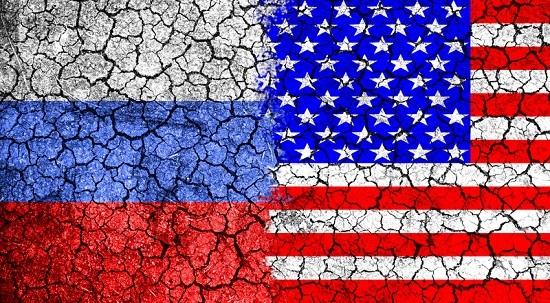

The United States and the Soviet Union engaged in fierce military competition during the post-World War II nuclear weapons race. Through the development of larger and more potent nuclear arsenals, both sides strove to surpass one another. This expensive endeavour produced many lethal weapons as well as an increased level of mistrust and dread. As a result, the Cold War turned into one of the most important wars in recent history. In addition, the arms race gave rise to the idea of “mutually assured destruction,” which postulated that the two superpowers were so well-armed that neither would risk attacking the other. The arms race lasted until the early 1990s and had a lasting impact on global politics.
The Arms Race after World War II was driven primarily by two of the major world powers, the United States and the Soviet Union. Each side felt it needed to build up its arsenal of weapons to be prepared for another conflict and to contain the other superpower's strength. In addition to developing various ground, sea, and air-based weapon systems, both sides also focussed on building an atomic bomb and then worked to construct nuclear weapons even more powerful than those first atom bombs. Despite some efforts at arms control agreements, the Arms Race led to a five-fold increase in military spending between 1955 and 1985, putting a tremendous strain on economies worldwide. With this heightened level of competition between the superpowers, each side became increasingly dependent on technological advancements to gain any advantage over its rival – thus setting in motion an escalating cycle that would last until the end of the Cold War.
The use of nuclear bombs helped bring World War II to a close. The United States launched an atomic bomb on Hiroshima on August 6, 1945, and three days later unleashed another bomb on Nagasaki. The bombs killed tens of thousands of people and left behind enormous amounts of wreckage. On August 15, 1945, Japan unconditionally surrendered, officially ending the war.
The development and application of nuclear weapons altered the global geopolitical environment. The Hiroshima and Nagasaki bombs started the nuclear era, which witnessed the rise of the Soviet Union and the United States as the two main superpowers. As a result, the Cold War began, lasting until 1991.
Additionally, the development of nuclear technology led to an arms race between the US and the USSR. Both sides created nuclear weapons to outwit one another strategically. The creation of international treaties and accords aimed at containing the spread of nuclear weapons was prompted by the development and proliferation of nuclear weapons, which constituted a severe danger to world security.
Nuclear weapons wreaked havoc on both sides of WWII. The United States launched an atomic bomb on Hiroshima, Japan, on August 6, 1945, killing an estimated 140,000 people and wounding many more. Three days later, the United States bombed Nagasaki once more, killing about 70,000 people.
Nuclear weapons were only ever used once in combat, and their destructive impact altered the direction of the conflict, resulting in swift Japanese capitulation and the end of World War II.
The Cold War was also brought about by the use of nuclear weapons since it showed the devastating potential of these weapons as well as the strength of the US and the USSR.
The use of nuclear weapons also had a lasting impact on both the environment and human health. Radiation from the bombs released into the atmosphere had a long-term impact on the health of those exposed to it, and the environment was heavily contaminated by the radiation.
The use of nuclear weapons also raised questions of morality and the rules of war, as the use of such powerful weapons raised concerns about the international laws governing warfare.

Nuclear Arms Race
Description-The United States, the Soviet Union, and their respective allies engaged in an arms race to gain superiority in the field of nuclear warfare.
The post-World War II period was characterized by a very tense nuclear arms race between powerful countries, where even the slightest miscommunication could have resulted in catastrophic outcomes. Fortunately, efforts were made to regulate the use of these weapons, and the dissolution of the Soviet Union led to a decrease in proliferation. Nevertheless, it is important to remain vigilant and take preventative measures to ensure that nuclear warfare is not a possibility.
Q1. Who decides when there is a new Nuclear Arms Race?
Ans. No one individual or government can decide when a new nuclear arms race begins; it is a result of multiple countries engaging in an arms race to build up their nuclear arsenals.
Q2. What resulted from the Strategic Arms Limitation Talks?
Ans. The Strategic Arms Limitation Talks resulted in two major agreements: the Anti-Ballistic Missile Treaty (ABM Treaty) and the Interim Agreement on the Limitation of Strategic Offensive Arms (SALT I).
Q3. What are some dangers of a future nuclear arms race?
Ans. A nuclear arms race can lead to an increase in military spending and international tensions, which can increase the risk of a nuclear conflict. It can also lead to the proliferation of nuclear technology, which could potentially be used to create weapons by terrorist organizations.